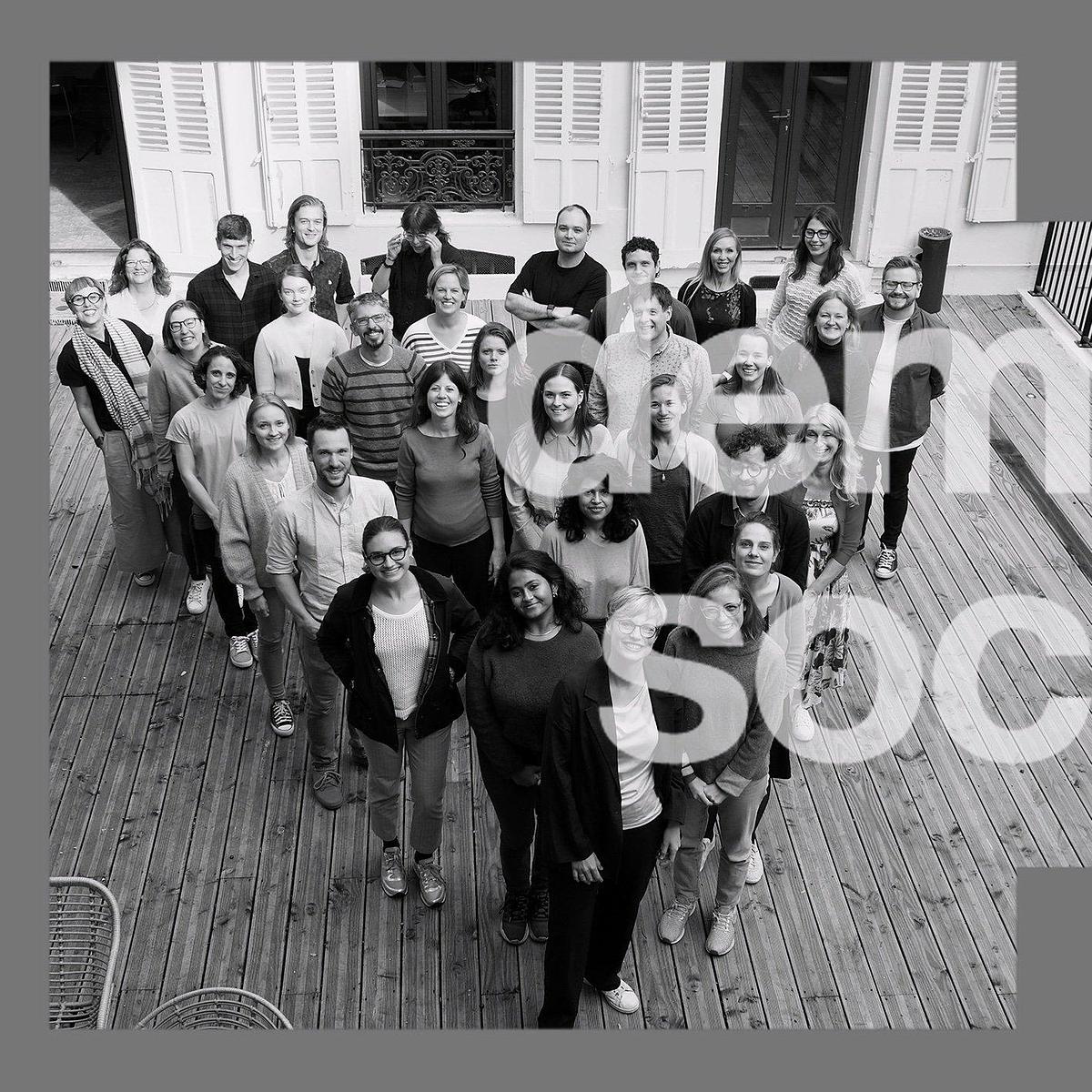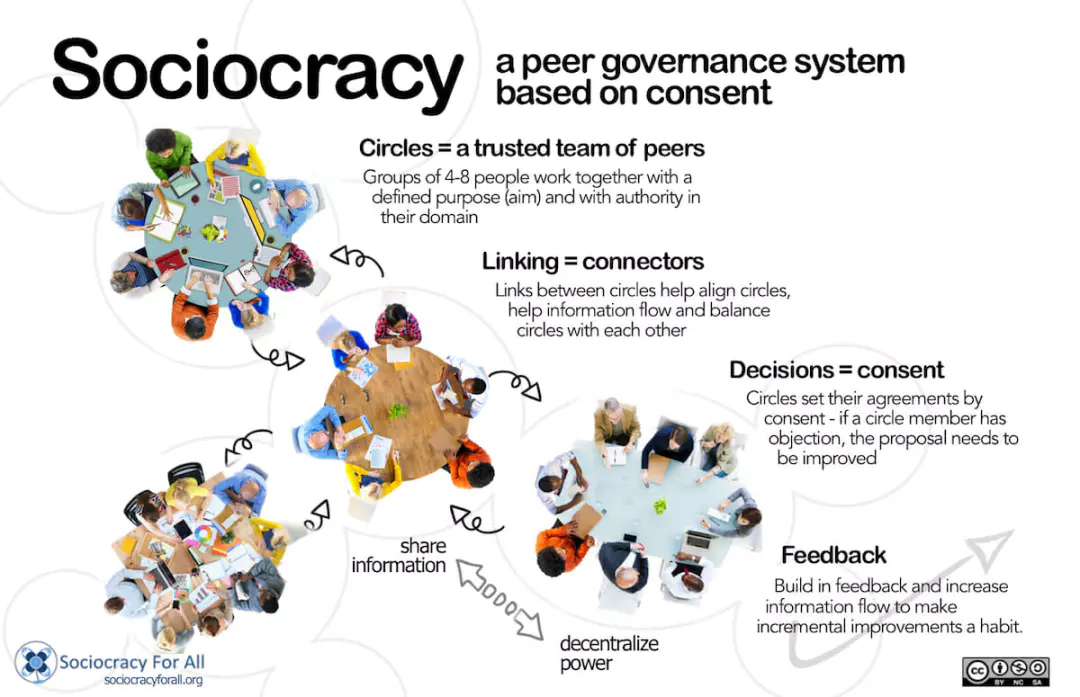
Democracy beyond Governance 1 : our thoughts & practices
Reflections on internal democracy in organisations
When thinking about democracy, what spontaneously comes to mind is probably something connected with governments, society, national or international agreements. Democracy and participation instead have multiple dimensions: from society as a whole, to institutions, organisations and even individuals (because sometimes we need some internal democratic processes to make sense of the different parts we have inside!). We cannot build a democratic culture on one of those levels if we do not take into account the others: they are interdependent and mutually reinforcing. By practising democracy at different levels at the same time we can foster a deeper, more systemic democratic and participatory culture.
While tools and methodologies might be different, purpose and principles are fundamentally the same:
- Being able to deal with complexity by tapping into collective wisdom and reach decisions that can be supported by wider parts of society or of an organisation;
- Create a fertile ground where collaboration can thrive;
- Create the conditions where conflicts, problems and tensions can be transformed creatively.
At Demsoc we are currently testing out how we as an organisation can better put purpose in principles into practice. A good example is our staff representation selection process, which took place in the first half of 2022.
Demsoc staff representation selection process design
Demsoc staff selects representatives
Democratic Society is growing. The days in which we all fit on the same table are long over, and when we choose to meet, we not only have to take long bus and train rides, but also need an event space to fit all of us.
Along with size, comes the need for different structures and ways of ensuring that everyone in our organisation is well-informed and heard. This is why in the beginning of the year, Demsoc decided to select staff representatives, to ensure staff voices are represented and heard in all important decisions in our organisation. To decide who should be our first staff reps we set up an internal working group and collaboratively designed a two phase process based on sociocratic principles.
The past months were a great experience, and we learned a lot - as process designers, facilitators, participants and also as colleagues. In this blog post we would like to share three things:
- The Demsoc staff representation selection process design
- What we have learned from it
- Some reflections on internal democracy in organisations
Demsoc staff representation selection process design
Demsoc staff rep selection process was designed around sociocratic principles. Sociocracy is about coming up with proposals and making decisions together, it’s transparent and inclusive decision-making that helps the people taking part to get to know each other, influence each other and learn together.

We adapted the sociocratic selection process (elections without candidates) to fit the very specific needs and characteristics of our team.
Sociocratic processes are ideally run in-person, with all involved in the same place at the same time. But with short timeframes and existing commitments, we had to run the process online. This posed some challenges and trade-offs for creating a transparent, inclusive decision-making process, with important differences in how we ran this process.
- A staff working group made up of volunteers was set up to plan and coordinate the process. This group produced a first draft of the role description for staff representatives based on a shared understanding of hopes, values and needs across Demsoc. This was shared with all staff for two weeks to add amends or comments to online before it was finalised.
- Staff deliberated and expressed their nomination in different groups at different times, with five groups deliberating in online video calls and one group engaging in written deliberation asynchronously in an online document. Groups had up to eight participants, with a facilitator and a notetaker in each.
- With 43 out of 49 staff participating at different times, we organised a two-phase process. In the first stage, staff deliberated in their groups to propose two nominees per group, selected among all staff members. Nominees then moved into a second phase, where they decided amongst themselves the four final staff reps.
The process ran for around four months, from February to June 2022. Co-creation of the staff role description took place over February to May, with process design from April to May, and facilitated deliberation over May and June.
The first phase of deliberative sessions lasted about 2 hours each, with four main steps:
- Nomination, where each person nominated for one person that they think would be suitable, based on the role description. Only being able to nominate one person meant the group had to consider the nominations of other participants for the final proposed pair of nominees.
- Justification, where each person shared why they thought the person they nominated would be a good fit for the role based on the selection criteria in the role description. These justifications were positive reasons why someone is qualified for the role.
- Change round, where people could change their nomination and share why.
- Proposal & Objections, where the facilitator made a proposal for the nominees based on the group’s discussion, justifications and votes. Participants could object to a proposal with reasons based on the role description and trade-offs. They could also record concerns that they wanted to be considered. Groups worked to consider how the objection could be resolved, and if it couldn’t be then an alternative proposal was made by the facilitator. Once there were no objections this meant the group consented that the proposal was within their realm of tolerance - being “good enough” and “safe enough” to try.
The second group phase had a group made up of people who were nominated by staff in the first phase. This followed the same methodology as above, with one significant difference - this time the group were asked to nominate four of the nominees present to be the final Staff Representatives. Nominating four people meant the group had to consider the balance and diversity of the final group. Each participant’s proposal was noted, and votes and justifications for each person were recorded in an online document which was visible to the group. As in the first phase, the facilitator then made a proposal and the group discussed objections until they found a proposal they were comfortable enough with. The group decided on four Staff Representatives as well as an additional role focused on learning and guiding these new roles.
The role of organisations in democracy
This building of a democratic and participatory culture at all levels, is not just speculative theory or words on a manifesto: there are very concrete manifestations of collaboration and democracy that we can practice in any organisation:
- Ensuring that every participant has a chance to express themselves, even when bringing challenging topics to the conversation
- Make sure to create a listening and supportive environment, where conflict and difficult conversations can be welcome as an opportunity to learn
- Use decision making processes that are at the same time efficient, inclusive and transparent
- Implement and create opportunities for feedback and constant monitoring and evaluation.
All this might be scary and daunting at the beginning, as it requires time, effort and commitment to build a culture of participation, transparency and honest communication. It might also imply going through somme uncomfortable times, as old mindsets and behaviours are challenged and eventually transformed. The good news is that, once we start, we are creating momentum and self reinforcing loops: the more we practise an internal culture of democracy, the more people will learn how to do it and will challenge their belief systems and habits, which in turn will make it easier to integrate a more democratic culture.
You might be also interested in reading Learnings from practising internal democracy at Demsoc where we share our learnings from the internal staff representation selection process.
Further projects & readings on this
Projects
Power at Work series
Power at Work: (Dis)comfort & Trust